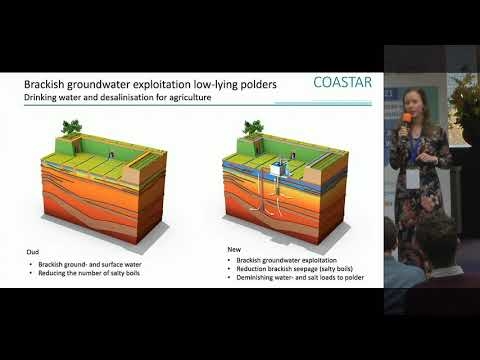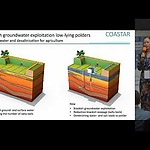The smart valve on the roof can be opened when extreme precipitation is forecast to create enough capacity to capture and retain the incoming rainfall. However, it is yet unknown if the forecast accuracy is high enough to provide added value, as false alarms in the forecast can also lead to a reduction of water availability, and therefore a reduction in evaporative cooling and plant health.
To test the magnitude of this trade-off, we evaluate the performance of ensemble precipitation forecasts from the European Centre for Medium-Range Weather Forecasts (ECMWF) to trigger drainage from blue-green roofs. We simulate blue-green roofs in a hydrological model on 28 locations over the Netherlands, using hourly meteorological observations over the last 7 years and different probabilities of the ECMWF ensemble forecasts to open the smart valve and trigger drainage.
We show that this forecast-based drainage creates enough buffer capacity to capture 70-97% of extreme rainfall (>20mm/h). Moreover, evaporation rates relative to potential evaporation on hot summer days is high (around 70%) , and much higher than from traditional green roofs (around 30%). This serves to underscore the higher capacity of blue-green roofs to reduce heat stress.
These results show that blue-green roofs are much more effective in reducing pluvial flood risk and heat stress than conventional green roofs, and that relatively low-resolution ECWMF forecasts can further increase their effectiveness. Initial results of a suitability analysis to upscale this solution in Amsterdam show that approximately 14km2 of roof surface is potentially suitable for blue-green roof application, which is on average 10% of the area of urban catchments. This underscores the contribution that blue-green roofs could make to help cities adapt to the weather extremes of the future.
In-person Conference
Source: YouTube - COASTAR

